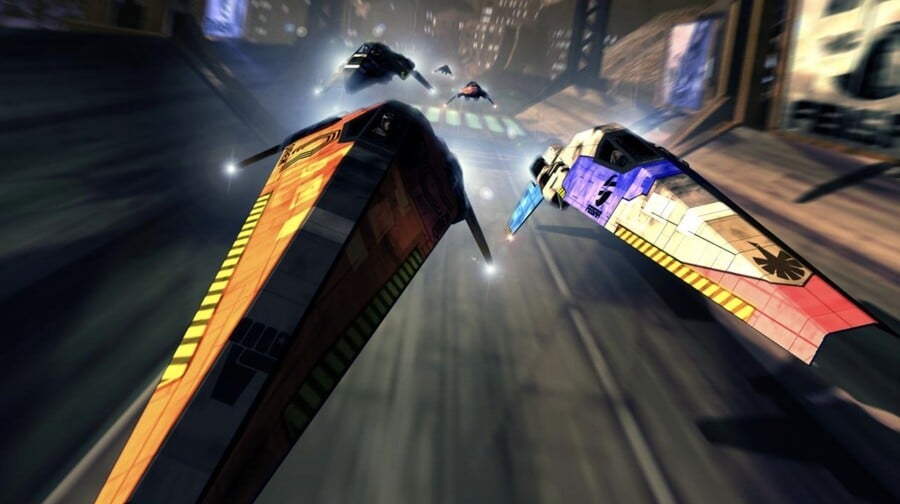
One of the first PlayStation titles to really show off the raw 3D muscle of the system, WipEout was created by a team of around ten people and took approximately fourteen months to complete, with the bulk of that time being spent exploring untested and unknown prototype hardware. A ground-breaking technical achievement, it was equally famous for the fact that it managed to seamlessly incorporate music from professional dance artists, something which games had been trying to do for years - with varying degrees of success. It’s perhaps this element of the game that sticks in the mind of people who experienced it for the first time back in 1995.
We were really into the kind of music when we developed the game, so it made sense to feature it in some capacity
The game’s designer was Nick Burcombe, who started his illustrious career in 1989 at Psygnosis - the UK company which would eventually be swallowed up by Sony Europe to create the now-defunct Studio Liverpool. He reveals that the use of music in the game wasn’t for marketing purposes, but was primarily to accentuate and intensify the experience. “It wasn’t a commercial decision, but a purely artistic one,” he insists. “We were really into the kind of music when we developed the game, so it made sense to feature it in some capacity. The choice to combine WipEout’s excessive speed with techno an organic one; it just felt natural. Sony’s marketing department made good use of it afterwards, deftly positioning WipEout as part of a new generation of cool games.”
Burcombe’s memory is so sharp that he can even pinpoint the exact moment when the decision to use techno music occurred. “I was playing the last race of the 150cc cup in Super Mario Kart on the Super Nintendo, and I’d muted the game audio so I could hear my own music,” he explains. “Age of Love was playing on the stereo in the background. I’d tried about ten times to beat the last race, and on this final attempt, I was in second place by the time the music was about 2:10 mark. The final laps took place where the track was at 2:45 and it felt so exhilarating; it was as if the music was pushing me on into a deeper gameplay experience. I made it across the line with about a tenth of a second between me and Bowser, who was pushed into second place. Psygnosis artist Digby Rogers was in the room at the time, and he was literally on the edge of his seat by the end of the race; he commented that it was the most amazing thing he’d ever watched on TV! That’s ultimately where the concept of marrying the thrill of racing with the intensity of techno came from.”

The Genesis of WipEout
The next step for WipEout was a pre-rendered CGI sequence created by Jim Bowers (who based the ships on designs he had previously created for the Amiga and Atari ST title Matrix Marauders) set to music by popular UK dance act The Prodigy. This allowed Burcombe to solidify his ideas for the game even further and resulted in the concept getting some unlikely exposure via Hollywood.
“Jim’s original dogfighting chase scene was used to gain support for the game, and it worked - people just seemed to get it,” Burcombe says. “Much later on, Jim approached us with the opportunity to expand the sequence for a scene in the movie Hackers, which was in production around the same time and starred Angelina Jolie and Jonny Lee Miller. I used this opportunity to clarify further some of the gameplay mechanics and rules for WipEout.”
While WipEout’s celebrated soundtrack - which showcased the talents of Orbital, Leftfield and Chemical Brothers, as well as songs from legendary in-house Psygnosis music producer Tim “CoLD SToRAGE” Wright, who we’ll get onto shortly - would go on to gain critical acclaim, Burcombe’s original playlist reads like a who’s who of early ‘90s techno acts - many of which will be totally unknown to anyone over the age of 30. The full list, which has never been published until now, included:
- Cygnus X – Orange Theme
- F.U.S.E – Substance Abuse
- Tomas Heckman – Amphetamine
- Dave Clarke - Red 2
- CJ Bolland – Horsepower
- Pump Panel – Ego Acid
- Prodigy - No Good
- F.U.S.E – F.U.
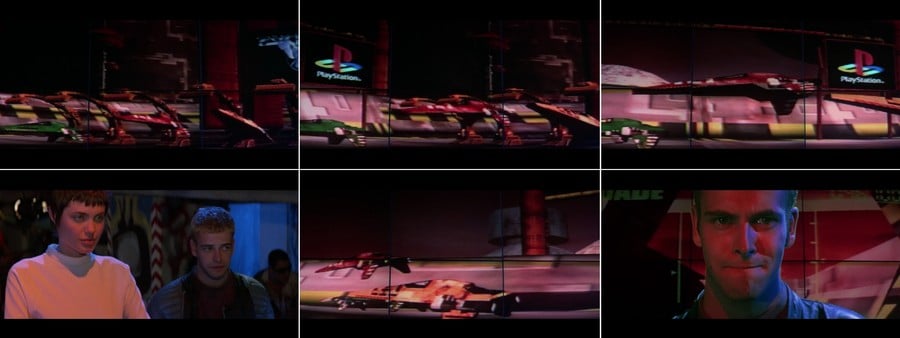
Although the musicians of today are all too happy to sign lucrative licensing deals so their songs can be featured in video games, back in the early ‘90s the situation was very different. “The idea of a proper recording artist allowing their work to be featured in a video game was almost laughable,” explains Burcombe. “Because of this, it was harder than you might imagine to get people on board. However, bands like Orbital - who were and still are very forward-thinking - could see the link and were incredibly keen to be involved.”
The idea of a proper recording artist allowing their work to be featured in a video game was almost laughable
Because Psygnosis could only secure three tracks from professional artists for the original WipEout, the aforementioned Tim Wright had to step up to the plate and compose a selection of songs for the game, all the while sticking to the main theme dictated by Burcombe’s own musical tastes. His aural contribution to the title cannot be understated; outside of the trio of licenced songs, the entire soundtrack of WipEout is down to Wright.
“When I was first asked to write the music, I saw it as just as another game to work on, to be honest,” he explains. “I'd just finished working on another PSone game called Krazy Ivan, which called for Industrial Techno tracks, so I was kinda in the right electronic ballpark - or so I thought. Then I was shown the short movie-style clip that Jim Bowers had been working on, a version of which would later be included in the film Hackers. That changed my mind, and inspired me to think that this game could be something quite special, something different.”
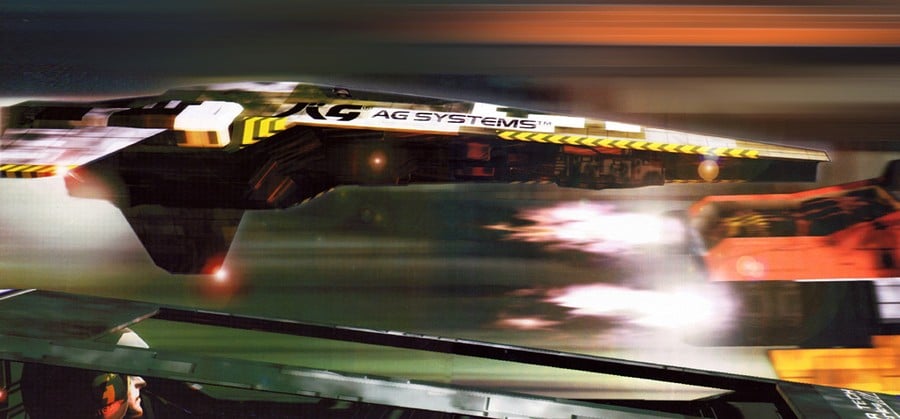
Working on the game would prove to be more difficult than Wright suspected and required him to change his usual style. “I remember playing the first track I'd composed to Nick,” he recalls. “He said something like, ‘yeah, it's a decent track, but it's a bit too industrial, too old-school electronic. We need something faster-paced and more clubby’. Clubby? I didn't have a clue. I really didn't care for dance music at all at that stage. I was a child of the '80s, so it was going to be a bit of a struggle. Around that time, Psygnosis was moved from the Liverpool Docks to new shiny offices constructed from metal and green-tinted glass. I reasoned that a new futuristic environment might encourage me to create new futuristic sounds, so I sat down in my brand new studio, armed with Time & Space Volume 1 & 2, an Amiga A1200, a Roland JD800 and an AKAI S2800 sampler, and I started to knock some ideas around.”
All of the songs were composed within a very short time frame whilst consuming copious amounts of Red Bull and takeaway pizza
Wright has always believed that the musical direction he took on the first WipEout was largely influenced by the samples he was working with, but a recent discovery has made him reconsider his recollection of events.
“Around the time I was writing the WipEout tracks my brother Alistair - totally coincidentally - gave me a cassette tape labelled ‘Goa Trance’," he says. "I'd listened to that tape a few times in the car and then basically forgotten about it. I found the tape again a few days ago and popped it into my old Sony Walkman cassette player and pressed play. I was greeted with track after track of CoLD SToRAGE/WipEout-eqsue music. I was gob-smacked; I'd never really heard any other music that was that similar in style to my original WipEout music, but maybe that tape had inspired me in some way? I'm not sure who the composers are, and I've tried using Shazam and other services to identify the tracks, but without success.”
Musical Magic
Regardless of where Wright’s inspiration came from back in the middle of the 1990s, the indisputable fact is that he crafted some of the most memorable tunes of the period. “All of the songs were composed within a very short time frame whilst consuming copious amounts of Red Bull and takeaway pizza,” he admits with a chuckle. “I have really fond memories of working on those songs into the small hours and watching the sunrise over Liverpool as I pumped the tracks out into an empty building.”
Somewhat ironically, Wright’s masterpieces came at time when games like WipEout were looking to mainstream musicians to provide their soundtrack, as opposed to video game composers like Wright himself. It’s a testament to the quality of his work that despite the eventual influx of new artists on the sequel, WipEout 2097, Wright’s compositions continued to rub shoulders with the output of 'proper' commercial acts. “By that point, it was easy to coax big-name acts on board,” he continues. “So personally speaking, to get my music on the games at this stage was a massive vote of confidence.”

However, while the musical side of WipEout was progressing nicely, Burcombe and his team had other issues - the most pressing of which was the primitive nature of Sony’s new development hardware. “It was a bit of a nightmare coding for the system at that time, as it was still in the very early stages of development,” he explains. “We had one of the earliest prototype PlayStation dev kits in the UK - it was about the size of a photocopier and was festooned with noisy fans which attempted to keep it cool during use. When a game was running the sound this thing created was almost unbearable - it was like a jet engine! Amazingly, it was only running at a third of the eventual speed of the production console, a fact which created further problems because it’s very hard to code a game when you don’t fully understand what the hardware is capable of. We were almost coding blind, to a certain degree, but the team pulled it off.”
We had one of the earliest prototype PlayStation dev kits in the UK - it was about the size of a photocopier and was festooned with noisy fans which attempted to keep it cool during use
Burcombe’s role as lead designer meant that he didn’t have to get his hands too dirty with actually coding the game, but he could tell that it was a real struggle for his team. “Limited experience, primitive design documents and processes and unfinished dev hardware combined to make the production process a real challenge,” he comments.
“I saw several months go by with not much progress, and at one point we even showed it to Sony Computer Entertainment CEO Ken Kutaragi, and he told us we’d never get it completed in time for the launch of the PlayStation. I think the original goal was to keep it at 60hz in a higher resolution, interlaced. After it became clear that we simply couldn’t achieve that, we lowered our technical sights a little and went for the standard PAL resolution and 30hz. Lots of work went into discovering how to do stuff like building a 3D pipeline and what best practices were. When I sit here now and consider the complexities and challenges of development, it’s amazing that we even managed to produce the game at all. It was truly bleeding-edge stuff.”
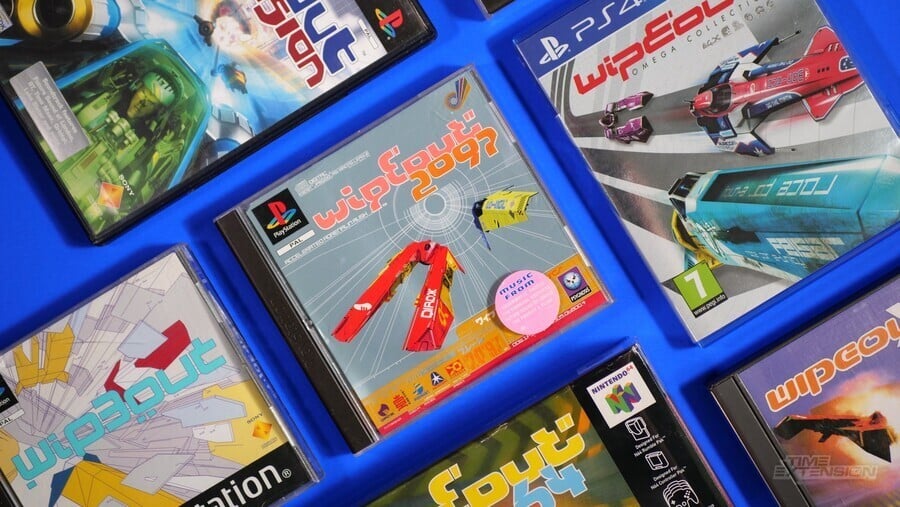
Given that the game was breaking new ground in the 3D racing arena, WipEout unsurprisingly called for some rather unique design methods. “Each of the circuits was drawn by myself on large sheets of A3 paper with details and annotations about the elevation and curvature of the tracks,” Burcombe recalls.
“For some tracks, there would be notes at the side describing what the player should able to see or what was hidden from their view. Each track ended up with a distinct feel, which is partly down to the fact that they were rendered by different artists, working independently of one another. Some of the ideas we had couldn’t be met by the hardware, though. For example, the first drop on Altima VII was supposed to be like base jumping off a cliff, and would have required serious skill on behalf of the player to land the ship successfully and maintain speed. In the end, we simply couldn’t draw the track that far so we were forced to include a cave to mask this fact, and then it transpired that we couldn’t drop off the geometry and still keep on top of the relative race positions of each ship, so the top of the mountain and the base of the mountain had to be joined. The end result didn’t quite capture the amazing free-falling sensation I was after when I conceptualised that part of the track, but it still worked. It was a shame, but just one of those things you encounter when you’re developing on brand-new hardware.”
"The mechanics of Super Mario Kart were virtually flawless, so it was a constant source of inspiration for me" - Nick Burcombe
Having already provided inspiration for the game in one sense, Nintendo’s seminal Super Mario Kart would go on to influence another key part of the WipEout experience: its weapons. “The mechanics of Super Mario Kart were virtually flawless, so it was a constant source of inspiration for me,” says Burcombe.
“But we obviously couldn’t have banana skins and shells - we had to make it all futuristic and introduce things like electro-bolts and all that kind of sci-fi stuff. In WipEout 2097, Chris Roberts - who also worked on the PS Vita instalment WipEout 2048 – put in the famous ‘Quake’ effect, and that was just mind-blowing; everybody who saw it instantly fell in love with it, and it went on to become one of the fundamental weapons of the entire series. I’ve heard some people question the inclusion of weapons in the game and the series as a whole, but I can say now hand on heart that we always intended WipEout to be a combat racer. There was never any question of it being purely about speed; we wanted to replicate the same amazing feeling of blasting someone to steal P1 that we'd enjoyed so much in Mario Kart.”
Hardcore Gamers Only
While those who moan about the weapons are clearly misguided, there were other genuine complaints levelled at the game; when compared to later instalments in the series, the original WipEout is surprisingly difficult. “We didn’t really set out with the aim to make it challenging, but we kind of set the difficulty for ourselves – which was probably meant it was a bit too hardcore,” admits Burcombe. “The people on the team that were really good at it fell in love with the demands of the experience, and consequently everyone else got left behind, which is probably why it’s always been a bit of a cult hit with really skilled and dedicated players."
However, one element which contributed directly to the challenge was the unforgiving collision system. “There were no glancing scrapes which resulted in a minor drop in pace in the first WipEout,” explains Burcombe. “You’d just stop dead as soon as you bumped into something. That wasn't by design, it was down to my limited experience that we allowed it to ship like that. It was the first thing that was solved in WipEout 2097, and as a result, I feel that game plays much better, and it consequently scored higher in reviews.”

While the sequel was able to fix this one problem, Burcombe doesn’t feel it bested its predecessor in every regard. “I don’t think some of 2097’s circuits were anywhere near as good as those in the first game; aside from insanely brutal Silverstream track - we probably went a bit too far with that one - the courses from the first game are generally superior. However, that's a reflection of the amount of time we spent designing them as opposed to a lack of effort; all of the courses in the sequel were conceived, designed and rendered in just three months, whereas in the original WipEout we were able to devote about two months to each.”
WipEout’s level of difficulty was so high that it led to one of the more amusing - and sorrowful - stories from its development, which occurred in the final phases of testing. “Because it was so hard, nobody on the test team could complete it from start to finish in one sitting to prove the game worked all the way through without restarts - everyone had done it using save games,” recalls Burcombe. “I was utterly convinced that it could be finished in one go, but the trouble was that I had to prove it. So one night I stayed late at the office and decided to do exactly that. I must have had to restart about twenty times, but then in the early hours, I finally did it: I secured first place in every race sequentially, without having to use a single restart and no saved games. Almost inevitably, it crashed before the credits rolled! It was probably the last crash bug we knew about in the game and was discovered the night before gold master approval. I was so convinced I was wasting time having to prove this, but then it proved me wrong. I was annoyed at that moment, but that soon changed to amusement when I was relaying it to the team the following day.”
It’s only with hindsight that you can see the difference the whole team was able to make; along with other developers at the time, we took gaming and dragged it kicking and screaming into a new era of cool
Despite last-minute bugs, WipEout was a critical and commercial triumph. The game proved to be the perfect vehicle for Sony’s drive to make the PlayStation as cool as possible; the company wanted to make sure players knew that this new console was a step up from the likes of the Mega Drive and SNES, which many perceived as being aimed at children. WipEout, with its demanding gameplay and pumping techno soundtrack, was ideal.
Interestingly, Burcombe insists that it was never the intention of the team to create something that would trigger a cultural shift in the video game industry. “No conscious decision was ever taken at all from my point of view; it all just came naturally from the culture we’d immersed ourselves in at the time,” he reveals. The signature look of the series was down to the involvement of The Designers Republic, a trendy design agency which had previously worked with the UK band Pop Will Eat Itself.
“Keith Hopwood from the graphic design department had some material sent through from The Designers Republic,” remembers Burcombe. “I think it was Lee Carus - who was one of the artists driving things forward on the team - who scanned some of the icons in and started putting them on the ships and into the game. It looked great, and the connection was instant; the images just seem to fit perfectly. We contacted The Designers Republic and they were happy to become more intimately involved, and they actually ended up doing the branding for WipEout.”
Ironically, the iconic billboards which litter the trackside of the game and feature so much of The Designers Republic’s work weren’t strictly a visual decision - they served a dual purpose. “The art team had to deliberately position the billboards to cover up draw distance issues,” says Burcombe. “They were basically employed to cover up the graphical limitations of the game. The fact that they worked so well and helped tie the visuals together with the DR designs made it a very good solution.”
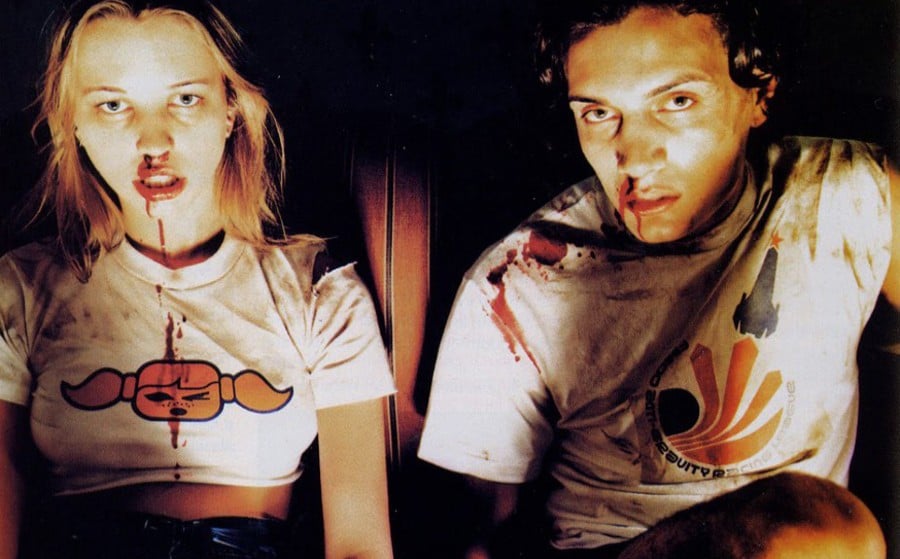
The influence of the game’s music also been incredibly far-reaching. “I've had hundreds of e-mails from people telling me how those tracks got them into either listening to or writing their own electronic music,” reveals Wright. “I've had people tell me that my WipEout music helps them run, jog, drive, even cope with near-fatal illness or personal tragedy. I tell them that it's nothing to do with me, they did all the hard work, I just gave them some music to do it to! It's humbling nonetheless, and it never ceases to amaze and delight me that people hold the music in such high regard. It wasn't just the public either - I was really chuffed to win best music at the Golden Joystick awards back in 1996.”
WipEout Today
These days, Burcombe is head of Playrise Digital and relishes the thought of taking on new challenges as the gaming industry expands and changes. However, he still cites his time on WipEout as one of the most enriching of his entire career. “Being part of a team that let its passion shine through and seeing our product come to fruition and really make an impact in a gaming and cultural sense was amazing,” he says. “It’s only with hindsight that you can see the difference the whole team was able to make; along with other developers at the time, we took gaming and dragged it kicking and screaming into a new era of cool. The fact that the WipEout franchise was still kicking ass up until the 2012 closure of Studio Liverpool is a testament to the soul of the game.”
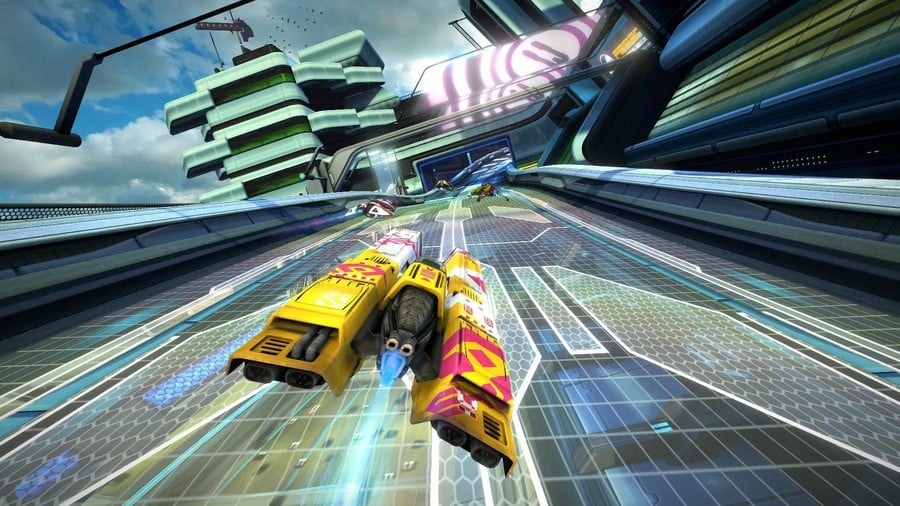
Speaking of which, how does he feel about the closure of the place where he cut his teeth in the industry? “It was a really disappointing end to a great story,” he laments. “And a story that has been part of my life since 1986 - I used to test Psygnosis games in school holidays before joining the studio full time. It has been a phenomenal tale from start to end and the legacy that is left behind will, I believe, stand proudly in the annuls of video gaming, from Brataccas to WipEout 2048. Everyone who ever worked there, in whatever capacity, has been part of a very important industry story. The people I’ve met have been incredible, the memories are rich and varied. I’m glad I started my career there, but recognition needs to go to one guy who rarely gets a mention – the only guy who went the full distance - Garvan Corbett. This guy is a legend whether or not he’d acknowledge such an accolade.”
Following the closure of Studio Liverpool in 2012, the company has 'risen from the flames' to a degree via Firesprite, which, in 2021, came full circle when Sony bought it. WipEout lived on, too, despite Studio Liverpool's demise; 2017's WipEout Omega Collection was developed by XDev, Clever Beans and Creative Vault Studios and pulled together content from Wipeout HD (including the Wipeout HD Fury expansion) and Wipeout 2048. WipEout Merge (formerly known as WipEout Rush), the most recent entry in the franchise, is a smartphone title developed by Amuzo Games, which describes it as an "intense marriage of merge, idle, and card collection." Given that Merge came out this year, it's hardly fair to say the series is dead – but it's certainly not the force it once was.
Does WipEout have a future? We hope so, because it shaped the past in more ways than one.
This article was originally published by pushsquare.com on Thu 4th December, 2014.






Comments 16
Ah, so this is what you meant with "WipEout related surprise coming up". I shall read the article, then.
Ok, that was brilliant! To think "WipEout" came out of SNES "Super Mario Kart" while listening to Jam & Spoon's "Age of Love" is surprising, and new info to me. Tim Wright is far too humble IMO. It is indeed because of his work in the original "WipEout" I took on music making as a hobby. Nintendo has been neglecting it's own "F-Zero" franchise for way too many years now (I am looking forward the portion of "Nintendo Land" that has it, but it's no sequel to GX) and if now Sony decides to give "WipEout" a back seat, where will I ever get my future racer fix from!? I am just very glad to have been around in the right time to enjoy all of this so far in person.
Here's a Spotify playlist of the "original" tracklist: http://open.spotify.com/user/msephton/playlist/7ewstHZMbxphMpLu94hqH2
Nice article!
I would really love to see that wipEout game for PS4 that was supposed to be really diffrent. they should finish it and release it as a new era post-Studio Liverpool era what do u think?
Wow this was an awesome read! It's cool to get background info on a series I've been playing since I touched a dualshock.
Just wanted to say "thank you" for the article. Great stuff. I was really saddened to hear of Sony Liverpool's closing. Being a kid from the States, I'd never really heard or seen anything quite like Wipeout until it came along. It opened me up to a lot of great music (hell, I think the Astralwerks listserv was the first one I was ever a part of), and to this day I'm bonkers over the visual design. Truly monumental.
R.I.P Psygnosis/Wipeout..it really is a tragedy to me (i guess i don't get out much these days)..i was thinking of getting Driveclub Or The Crew but maybe i'd be better off getting a second hand ps3 and Wipeout Hd Fury? Please can anyone tell me if people still play it online? i dont think Formula Fusion is out till 2016(look at the R8 fb page -i'm sold),as for Radial g and Distance..fingers crossed.Wipeout,Wipeout,Wipeout,ect..Sorry.
@Shiryu Your WipEout Legacy stuff is amazing. No surprise at all that WipEout shaped your musical legacy!
I was very much the same, although I grew up with the 17-ish fps PAL Tantalus ports on the SEGA Saturn. Both were missing the licensed music, but the Tim Wright stuff was AMAZING and truly inspirational to shaping my own musical tastes and music writing. All said, I feel I got a unique WipEout experience relative to Sony Playstation owners. I do feel that I did get the best of both worlds however, because I picked up the two Sony Music releases of all the licensed music for WipEout and WipEout 2097; being able to pick them up locally from a big chain Sanity music store here in Australia was brilliant, and a memory I will cherish forever.
Classic WipEout is absolutely my jam, with only SEGA arcade and exclusive racers even able to match my love for the series.
I am also very, very thankful for BallisticNG - it is all the classic WipEout I will ever want in a modern package. I love all the amazing bespoke ships, tracks and music. I also adore the Steam Workshop, Custom soundtrack option, and all the other fan conversions. It means being able to play pretty much ANY WipEout track from the past with the corresponding classic teams and old-school musical selections. The slavish attention-to-detail that the controls were given - a heady mix of 2097 and Wip3out make it absolutely perfect!
Fantastic article! I would love to see BallisticNG get some kind of coverage, as I feel it has flown under the radar for far, far too long
I remember the PlayStation and WipEout drug related paraphernalia that appeared in publications like Mix Mag; the PlayStation consoles installed in chill out rooms like Ministry. Suddenly gaming WAS cool. All my non-gaming friends wanted a PlayStation when they had given up on gaming, if they had ever started, years before. Halcyon days!
Can you imagine Sony, Microsoft or Nintendo running such a campaign now? How soft we have become so soon.
I forget, were the original tracks ever ported to other versions? They were fantastic but this is a deal breaker whenever I go back to the original. One ill timed minor accident on the last lap and it's all over, far too brutal.
@AJB83 Thanks, glad you enjoyed! That game series truly shaped a lot of my life, music career included.
@themightyant Wip3out Special Edition has Altima VII, Terramax and Arridos IV from the first game in there redone in the Wip3out style.
With a bit of hunting around in BallisticNG discord, you can grab ports of all the old courses... this video shows gameplay of every one - it's pretty amazing:
https://www.youtube.com/watch?v=kf7QAi321T8
@AJB83 Very cool. Much appreciated I will have a dig.
I have great memories of the original Wipeout, most of it centred around the music. I was big into dance music at that time (as were lots of kids and young adults) and me and my mates listened to the music from the CD probably more than we played the game (although I did love the game).
The best tracks on the soundtrack are the Cold Storage ones, and I didn’t realise until recently that these were done by a member of Psygnosis, I assumed they were a famed artist like the Chemical Brothers and Orbital.
I also much preferred the soundtrack on the first game compared with the second, despite the second having lots more tracks from ‘famous’ artists.
A great read, thank you.
I think the new WipEout games have lost a bit of the pure style and charm of the originals, the roads alone are just way over-designed now and actually less authentic than the originals imo, but the series is just classic.
Leave A Comment
Hold on there, you need to login to post a comment...